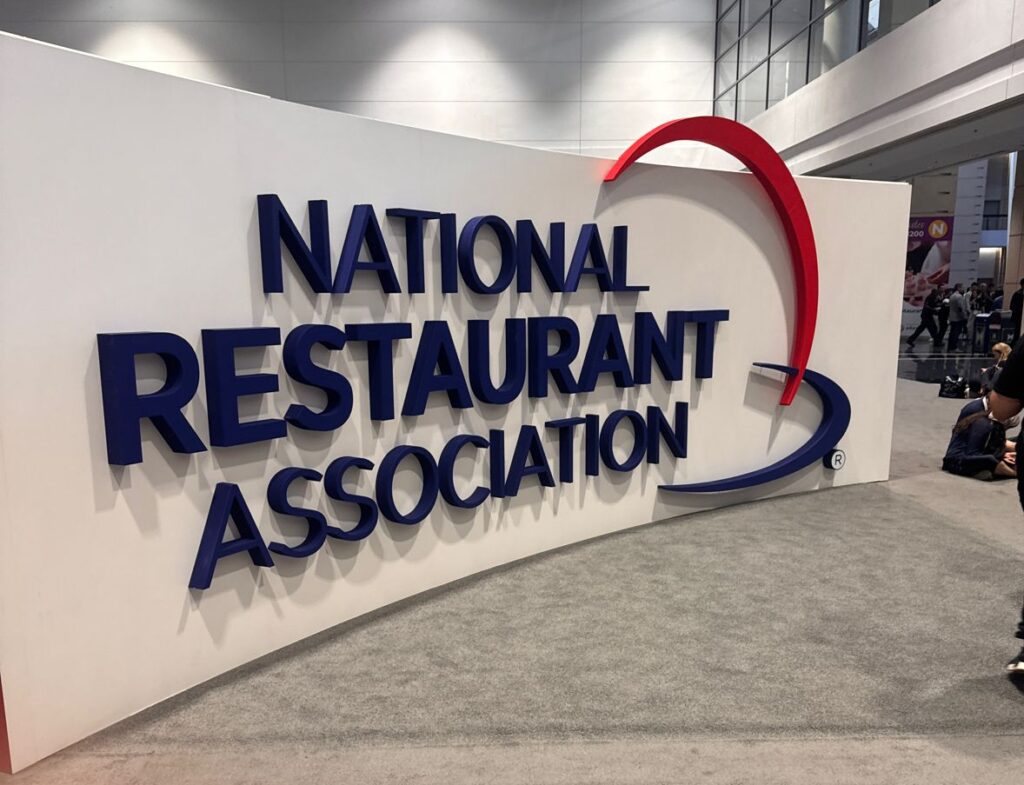
What a week for technology insights at NRA 2024. As the curtains closed on the National Restaurant Association Show in Chicago this week, we think about the innovation and change presented at the show. This event is a melting pot of ideas and technology, and it shows the evolving needs and solutions necessary for success within the restaurant industry.
We saw Operators and innovators come together to address a few key challenges observed throughout the show: labor efficiency, AI and automation, and sustainability.
Labor Efficiency in the Wake of Rising Costs
The recent minimum wage increases in California have set a new precedent, intensifying discussions around labor costs nationwide. As wages climb to $20 an hour, the demand for labor efficiencies has surged, pushing operators to explore various strategies.
Technology is a crucial ally in this space. From QSR Automations to kiosk companies like Bite, solutions are being tailored not just to enhance service but to significantly reduce labor expenses. For instance, strategic use of kiosks can minimize the need for staff during less busy hours, directly impacting labor costs.
And a cultural shift is underway, emphasizing the value of investing in employees. As noted by Nate Hybl of gusto, happier employees foster a more positive guest experience, which in turn boosts revenues—a subtly capitalistic approach to growth.
We’ll talk more about labor efficiency in the coming weeks both on our blog and on our LinkedIn page.
The Evolution of AI and Automation
While we did observe some robot solutions, there was a noticeable shift to more integrated, “invisible” tech solutions. While previous years showcased burger-flipping robots and automated sushi makers, the current focus has moved towards AI’s role in enhancing operational efficiencies.
Operators are increasingly curious about how AI can optimize staffing, streamline data usage, and improve overall service quality. Companies like Toast, Bite, and Juicer are just a few of the companies offering AI-driven tools that help restaurants adapt to dynamic market and pricing conditions and consumer needs.
Ben Pryor from Fourtop highlighted a sentiment prevalent among many: the industry should automate mundane tasks like inventory management to allow staff to focus on more engaging and revenue-generating activities.
More to come on these in the next few weeks.
Advancing Sustainability Through Technology
Sustainability emerged as a dominant theme at this year’s show, reflecting a heightened industry commitment to the environment. We focused on leveraging technology to promote eco-friendly practices effectively.
Innovations in this area are extensive, ranging from sophisticated systems that optimize resource use to advanced biodegradable packaging technologies. For example, there are new software tools to help restaurants reduce food waste by precisely tracking inventory and predicting order quantities based on real-time data. Additionally, companies are developing smarter packaging solutions that are not only compostable and recyclable but also incorporate advanced materials to extend the shelf life of food products.
Incorporating technology not only supports sustainability goals but also aligns with operational efficiency, reducing costs while enhancing environmental outcomes. As the industry continues to evolve, we are excited to see the solutions deployed.
We will feature more details around sustainability solutions in the future.
The Future
The technoloyg insights from NRA 2024 highlight a clear trajectory towards integrated and thoughtful innovation using technology within the restaurant industry. The integration of technology in labor management, AI-driven operational enhancements, and sustainable practices are not just trends but necessities that will define the future of dining.
The industry is at a point where embracing these innovations could significantly alleviate current challenges and pave the way for a more efficient and responsible dining experience. The road ahead has great potential; the question is how swiftly and effectively restaurant operators will walk it.